What do Mogambo, Gorillas in the mist and King Solomon’s Mines have in common? These films deal with excursions, adventure and the African wilderness. It is a beautiful and wild setting that explains part of the success of all these films – not surprisingly! In fact, participating in a safari in Africa, to be able to see lions and giraffes roaming freely is, perhaps, the dream of many people. Not forgetting the chance to see elephants and rhinoceroses in close-up, as well as many other mammals and birds.
However, the impact of these touristic journeys on wildlife is not always positive. Therefore, we should get to know the two sides of this famous coin; the good and the bad, the adventurous and the dangerous, the sustainable and the lethal.
The Origins of Safari
For Swahili speakers, “safari” has always simply meant “journey”. In the 18th century, sub-Saharan traders used it to refer to merchants transporting various goods from one place to another. However, for naturalists and explorers such as Thomas Ayres, William John Burchell and Gustav Adolf Fischer, the term assumed a deeper meaning, related to the study of wildlife on the African continent.
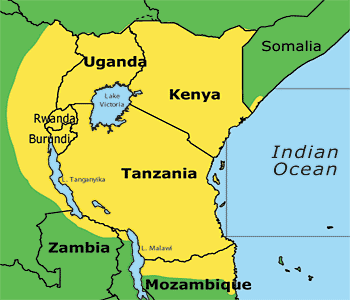
The term became synonymous with hunting, gathering and prey, after European wolfer and bushmen had landed into the country, during the golden age of colonisation. Elephants, lions, leopards, buffaloes and rhinos gave their final breath at the feet of numerous intrepid hunters, European and native. This included those who did it for trade and survival, as well as those who did it for profit and amusement.
Indeed, the past and the history of this activity is filled with dark decades. From watching gazelles and wildebeests, hyenas and antelopes, gorillas and crocodiles and even birds die. It was a bloodbath in which the most magnificent specimens were taken from the African continent and were displayed as trophies before everyone, as if a medal of honour was hanging around the neck. It was like getting a star on today’s Walk of Fame.
Development
However, to be fair, this kind of tourism is undergoing a significant and transformative reshaping. These days, Safari in Africa, as a holiday destination, is a sustainable and responsible tourism – theoretically. It means living an adventure across a unique landscape, shooting camera flashes rather than bullets, protecting the natural wealth by respecting and conserving the environment. Even though, these excursions are still a source of threat, danger and extinction for the animals themselves.
The ‘big ones’, at risk of extinction
Elephants and cheetahs, lions and rhinos, gorillas and buffaloes, giraffes and zebras… They represent at least half of the reasons why people go on safari in Africa. Among these animals, the five largest continental species stand out. But they are under constant danger, and even on the verge of total extinction. It’s the International Union for Conservation of Nature (IUCN) Red List that says so.
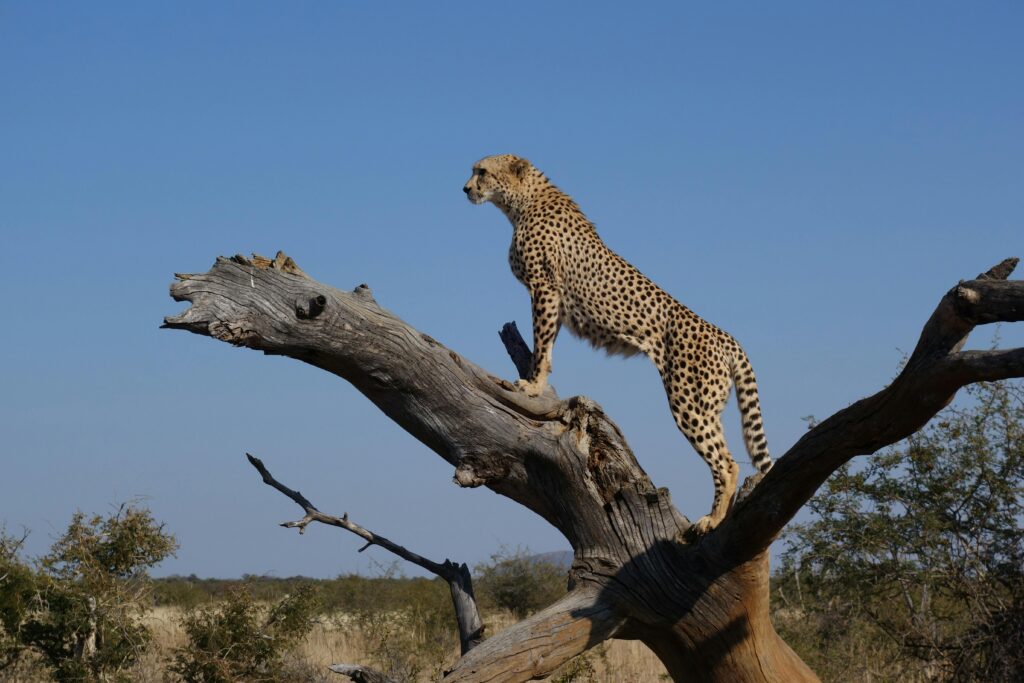
The Red List includes the cheetah, which deserves special attention. This large mammal is considered the fastest animal in the world and needs vast areas of land to hunt and to reproduce.
That is why a lack both of space and habitat has today become its greatest challenge and threat. In addition, the cheetah’s reproductive success rate, which is already low, means that the cheetah’s survival is in very, very bad trouble. According to the Red List, there are just under 7,000 cheetahs left in the wild. This small number is mainly due to illegal hunting of this exceptional feline.
Valuable tusks and horns
The African elephant is a giant of the savannah, easily recognisable from faraway by its large size, huge ears and unique trunk. What is its main threat? The hunting of elephants for the ivory of their tusks. Furthermore, its habitat is being destroyed by agricultural and urban sprawl.
The IUCN Red List recognises the African savannah elephant as endangered, while the African forest elephant is directly considered as in danger of extinction. These two species are, in either case, in a vulnerable state, following the overall decline in elephant numbers across the continent.
The buffalo, also in the spotlight
In the same way as the cheetah, the elephant and the other big African animals, the brown buffalo is on the list of the biggest not because of its size (although it abounds in this) but because it is difficult to see them, apart from the parks and nature reserves, of course.
These formidable bovids, elusive and shy of tourists and the lions’ number one adversary, can be found in herds of thousands. What’s more, they prefer to inhabit the forests and jungles of sub-Saharan Africa, especially the Serengeti. The African buffaloes are large and strong, but have not been immune to the indiscriminate slaughter perpetuated for centuries by humans.
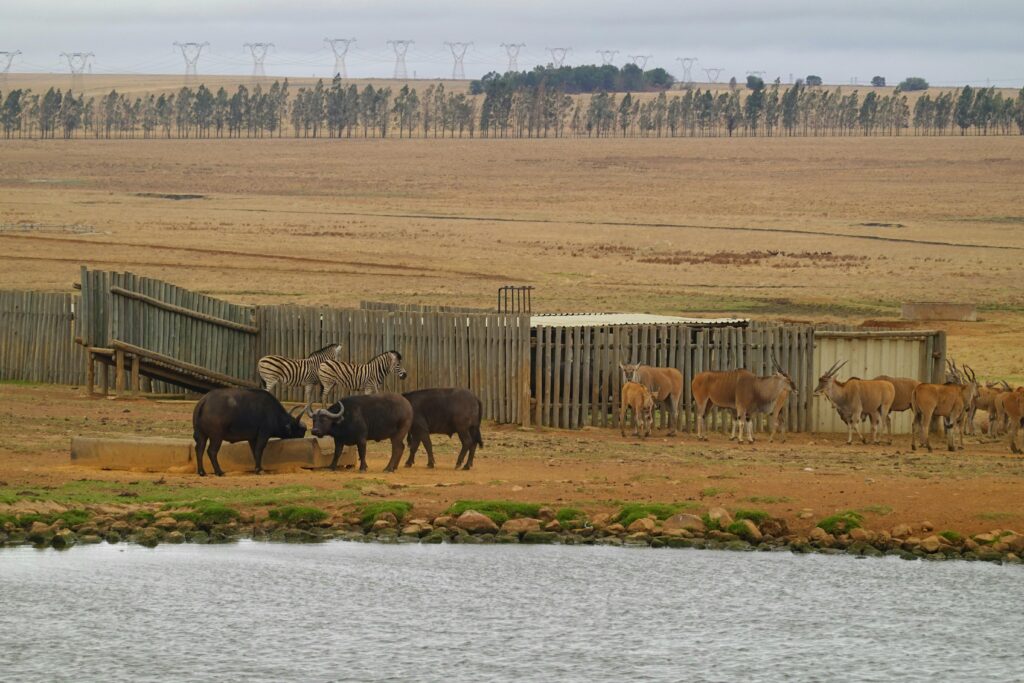
Over the years, their curved horns, the most distinctive feature of their species, have attracted thousands of hunters. Their aggressive attitude towards strangers, especially when living outside protected areas, has led to many people being killed under their attack. A good attack is the best defence, as the proverb goes, and these giant bovids have that warning written in their blood.
According to estimates, there are currently only 900,000 buffalo in the African savannah. This number has been affected by illegal hunting, naturally. It is also due to the reduction of their natural habitat, which is used for agriculture. Diseases, pests and, of course, drought, have also contributed to this decline.
Only a few rhinoceroses are left
The rhinoceros is another giant herbivore that is always on the podium of the most desirable animals to spot on safari in Africa. Despite its attractiveness and popularity (or precisely because of it) this has not saved it from being threatened and endangered. The proof of this is the estimated 500,000 specimens that existed at the beginning of the 20th century in both Africa and Asia.
This number dropped to around 70,000 in the 1970s, and now remains at only around 27,000 rhinos. It has suffered so much persecution and slaughter that there are now fewer than 5,000 black rhinos left in the wild, as reported by the IUCN. However, despite these low estimates, we must be proud of the conservation efforts to stabilise its population, as the same organisation pointed out.
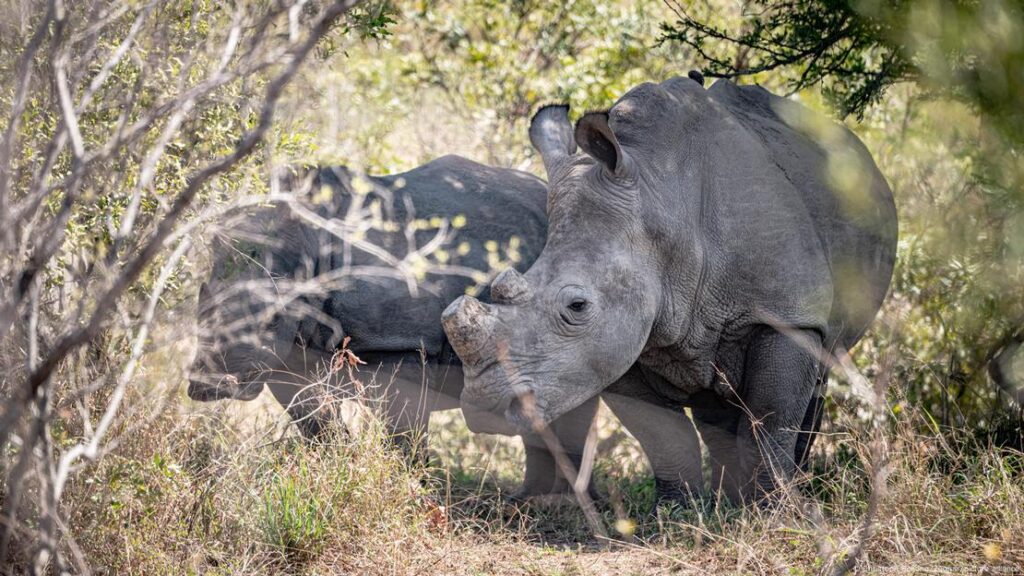
Nevertheless, this species remains in a very vulnerable limbo of extinction and preservation. Why is it in decline? The same reasons as for the elephant and cheetah: constant illegal hunting and habitat loss. Sadly, the fact that very few rhinos survive outside national parks and reserves is unequivocal proof of the species’ precarious situation.
The African lion, the endangered king
A symbol of power, bravery and strength, historically, hunters have chased the lion‘s shadow and footprint for its skin, teeth, claws and bones. At first, hunters went after the tiger, claiming that its bones soaked in wine could stimulate sexual appetite, as well as being a reliable treatment for arthritis and rheumatism. Unscientific claims that are nevertheless part of traditional Chinese medicine.
With the decline of these animals, triggered by illegal hunting, and the tightening of regulations concerning the tiger bone trade in China, lions have emerged as substitutes. Many Asian regions covet the bones of this other feline. In fact, the use of lion bone-based products has become normalised.
China, Laos, Myanmar and Thailand have been importing living lions into their regions for decades, as this 2015 report attests, along with skeletons and carcasses. This has led to a massive increase in exports of lion bones from South Africa, increasing by almost 6% since 2007
Protection exemptions
There is an international treaty that prohibits the purchase and sale of products containing elements of any of the big cats. However, there is one notable exception to the list of animals that this treaty protects: the African lion, specifically those raised in captivity in South Africa.
What’s more, if these conditions are fulfilled, the teeth and bones of this big cat, as well as its claws, skin and mane, could be sold all over the world, and legally. Absurd and hypocritical, isn’t it?
The lion population has declined drastically over the past decades, and today there are barely more than 20,000 lions, according to WWF/ADENA, the Association for the Defence of Nature.
This animal remains in danger due to illegal hunting, loss of habitat, and even conflict with the locals’ livestock. It is currently on the verge of total extinction on Earth. According to the Association, the number of African lions has fallen from 200,000 to 20,000 in the last century. A shocking decline which, in the context of the last twenty years, amounts to 40 per cent, at least. This is as appalling and chilling as it is true.
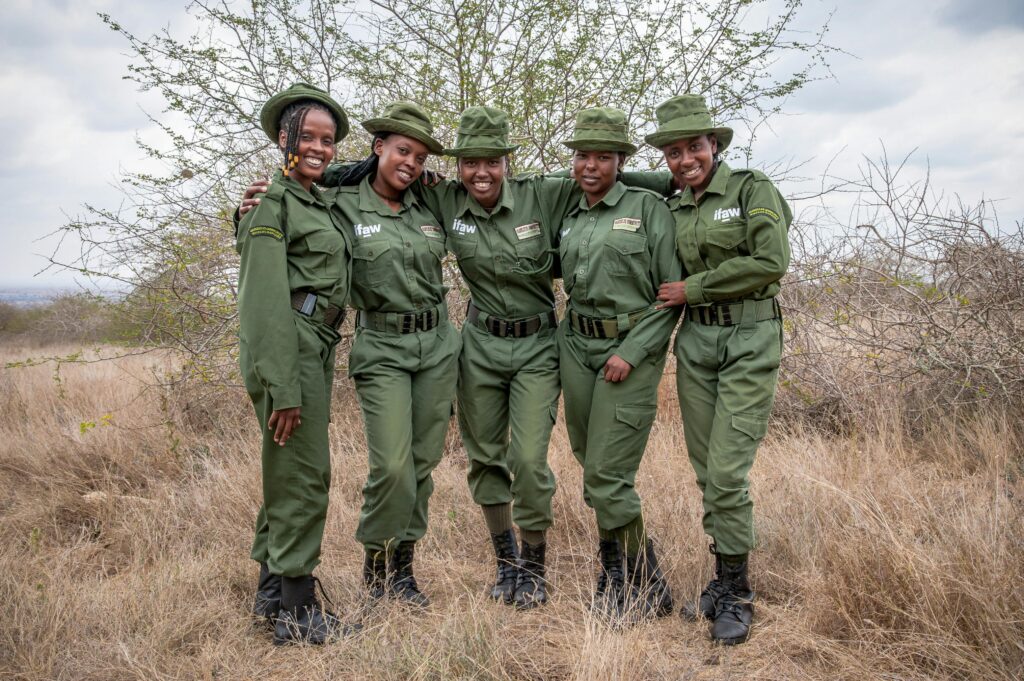
For the IUCN, the prospects of survival of this species are truly alarming. This is what it states in its Red List, which classifies these animals as a species that is both wild and vulnerable. A classification of risk of extinction that is understandable when you know that these portentous creatures are extinct in 26 African countries today. And they are present in only 27 of their original range countries.
Tourism sector: responsibility and regulations
A safari in Africa can be interesting and unforgettable, that’s true. However, just as a finger does not cover the sun, the attractiveness of these excursions should not make us lose sight of their impact on the ecosystem. The tourism generated by these excursions can be a source of income for the conservation of flora and fauna… if they are well controlled.
On the other hand, any poorly regulated safari in Africa contributes to the ongoing environmental disasters. Illegal hunting, habitat reduction, commercialisation of carcasses and conflicts with humans have rendered endangered many of the animals that safari tourists wish to see and photograph.
It is therefore up to everyone to try to put an end to this situation. How? By adopting sustainable safaris, for example, in particular those that not only respect the animals but also their environment. In short, it is a matter of enjoying the majesty of African wildlife, while taking care not to contribute to its disappearance.





